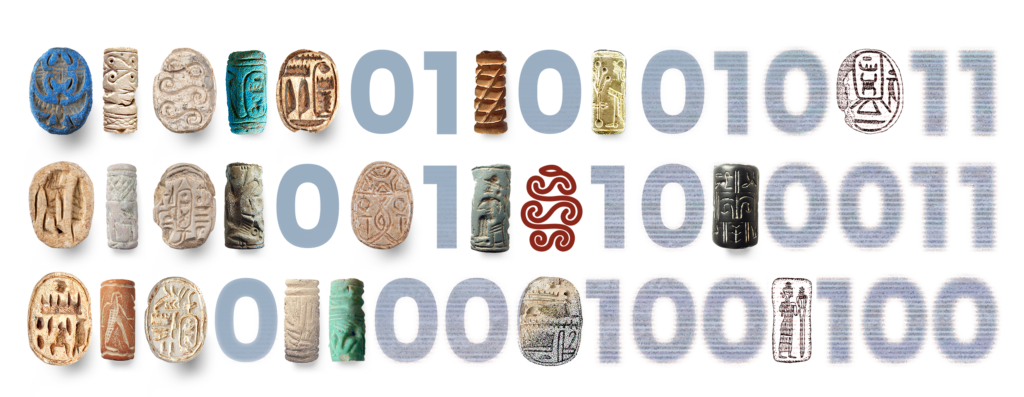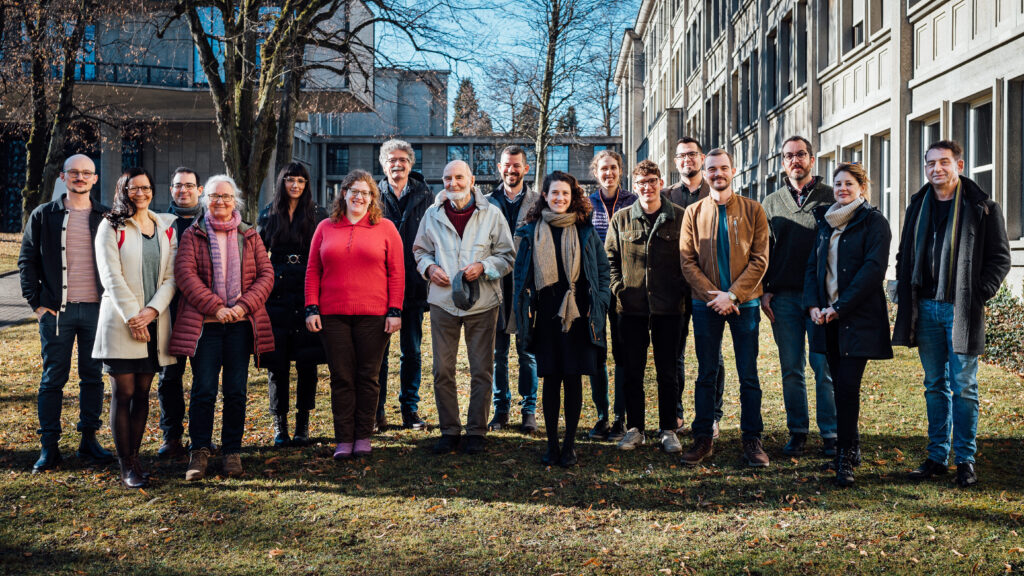Stamp Seals from the Southern Levant
A Multi-faceted Prism for Studying Entangled Histories in an Interdisciplinary Perspective
A SINERGIA project funded by the Swiss National Science Foundation (186426)

The project addresses stamp seals, a common but highly valued and multi-functional artefact class, as a privileged media to study various aspects of ancient Levantine social, economic, cultural and religious history especially in pre-Hellenistic times. Its core aim is to develop an online open-access, collaborative and expandable database entitled Corpus of Stamp Seals from the Southern Levant (CSSL) as a sustainable reference tool for future research in several disciplines: archaeology, ancient history, biblical studies, history of religion\s, Mediterranean studies, and others including exact sciences.
Taking its starting point from groundbreaking research initiated since the 1970s by Othmar Keel, particularly through his Corpus of Stamp-Seal Amulets from Palestine/Israel (CSSPI) and the Corpus of Seal Amulets from Jordan (CSAJ), the project will bring that unfinished task to completion while fully engaging the Digital Humanities transition. All relevant data will be translated from a pre-digital format into a digitized research infrastructure. Fulfilling the latest Open Access requirements, the new database will allow for active contributions by all interested scholars worldwide. Conceived to be easily updated and expanded, it will remain operative for decades to come.
CSSPI’s focus will be extended to wider regional concerns by removing modern borders from historical considerations: While “Southern Levant” designates the territories covered by the territories of present-day Israel, Jordan, and Palestine, CSSL will be so designed that it can easily be enlarged to integrate additional data from sites lying beyond that region, e.g., in the Central and Northern Levant, the Egyptian delta, or the Arabian peninsula.
A particular aim of the project is to increase the value of the data by interdisciplinary cooperation involving the specialized expertise of an international network of scholars and institutions. The full and best currently available documentation will allow senior scholars, postdocs, and PhD students of several disciplines (archaeology, biblical studies, history of religion\s) and three universities (Bern, Tel Aviv, Zurich) to conduct a series of innovative studies (see below). The latter will, for example, explore seal designs and their iconography as a resource for religio-historical investigation; questions of social archaeology will be studied alongside matters of political and economic history; gender history, social archaeology and biblical studies will intersect in a study of seal use by women. We want to draw on the full potential of the glyptic material to develop new approaches both to the history of ancient Levantine society, culture, and religion and to the study of biblical texts. Last but not least, a crucial aim is to bring the study of ancient glyptics into conversation with scientists. An overall concern of the project is to transmit established expertise and encourage a new generation of scholars to pursue, consolidate, and renew the study of ancient glyptics as a key medium for understanding historical entanglements in the Southern Levant.

The Project’s Modular Structure
The SSSL follows a modular approach that fits the organizational, conceptual, and methodological challenges and the variety of research questions, specialized expertise, and focused cooperation.
A. Digital Humanities module: creating the CSSL database
Module A is aimed at establishing the database of the project. This includes the design of the digital database’s metastructure; the full digitization of Keel’s cards representing the initial dataset of CSSPI/CSAJ, both published and unpublished data kept at the Bible+Orient Museum in Fribourg; the recording of additional artifacts not yet documented on the basis of subsequent publications and original data retrieved from museums, collections, and expeditions in Israel and Jordan; and the compilation of missing photographs and drawings. All data will be entered into the newly designed digital platform.
Staff of the module: Dr Ben Greet (UZH), Dr Tatjana Beuthe (UBE), Inbar Meyerson (TAU)
B. Honoring CSSPI, moving forward to CSSL
Module B will bring Keel’s Corpus in its initially planned format to completion—an important task in itself; even more important, it will bring CSSL online, accessible to the scholarly community worldwide, both on the basis of high-quality documentation provided by Module A.
Results: Final publication of CSSPI vols. VI–VII; publication of online database.
C. Exploring production, diffusion, and circulation
The studies produced in this module, will significantly advance the study of stamp seals as presented in numerous publications by Keel and other scholars of the so-called “Fribourg school”, supplemented, deepened, and integrated into a larger framework on the basis of CSSL. Module C follows the approach of the Studien zu den Stempelsiegeln aus Palästina/Israel, a loose collection of volumes published by Keel and others.
Module C1: Production and diffusion; group characteristics and workshop issues (workshops)
Module C2: Local and regional profiles and traditions: assessment and comparison (Dr Nadia Ben-Marzouk, TAU/UZH)
Module C3: The distribution of stamp seal motifs in the Southern Levant (Dr Eythan Levy, UBE)
D. Connectivity: CSSL at the crossroads of disciplines
This module evaluates how CSSL can represent a valuable resource for other disciplines (e.g. Levantine and Near Eastern Archaeology, Egyptology, Ancient Near Eastern Studies, Economic and Social History, History of Religion\s, Biblical Studies) and under what conditions its resources might be integrated in their research agendas. Ideally, the question of interdisciplinary connectivity should be asked several times, if not permanently, over the project’s duration: before getting started, in order to refine the task of completing the catalogue; at the end of the inventorizing process and the presentation of CSSL; and towards the end of the overall project in view of its cross-disciplinary potential and reception.
Module D1: Social archaeology: context, function, and consumption (Noa Rantzer MA, TAU/UZH)
Module D2: Political, social and economic history: stamp seals and interconnections (Dr Giulia Tucci, TAU/UBE)
Module D3: Gender history: seals and sealing in gender-historical perspective (Bruno Biermann MA, UBE/UZH)
Module D4: Biblical studies: assessing “iconographic exegesis” (Dr Silas Klein Cardoso, UBE/UZH)
Module D5: History of religion\s: new perspectives on the history of ancient Levantine religion\s in the second and first millennia BCE (Dr Fabio Porzia, UZH)
Module D6: CSSL and exact sciences: exploring a new interface (workshops)
E. Decades of change: contextualizing a long-term research project in its history and interdisciplinary ramifications
CSSPI’s development over almost 50 years reflects tremendous changes in scholarship, whether in terms of technology, methods, theoretical models, or scholarly paradigms. Adding a self-reflective dimension to the project will allow us to historicize our own research, to critically reflect how historical knowledge is framed by the conditions of its production, and evaluate how much our research is embedded in and impacted by changing concerns of society at large.
